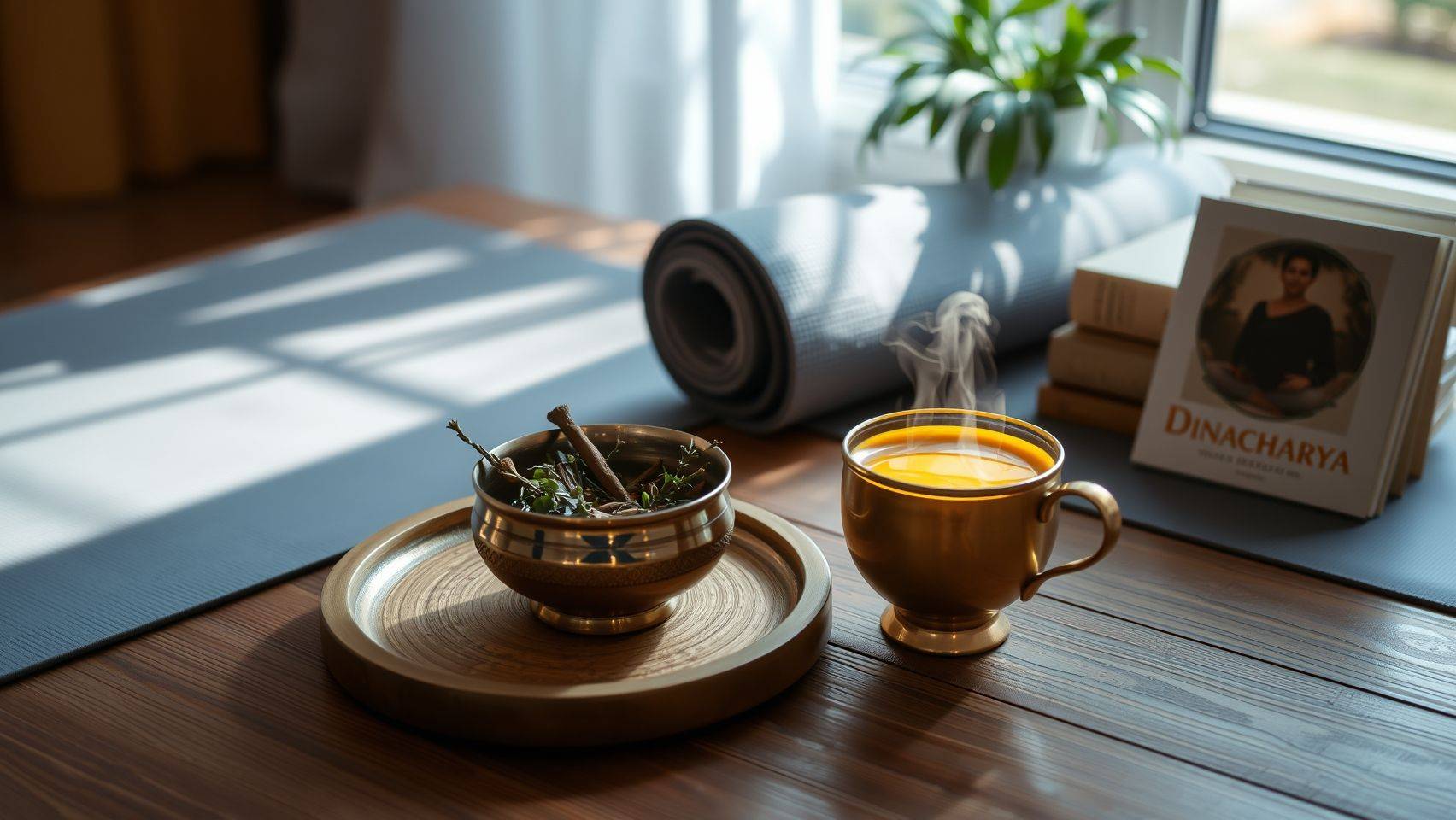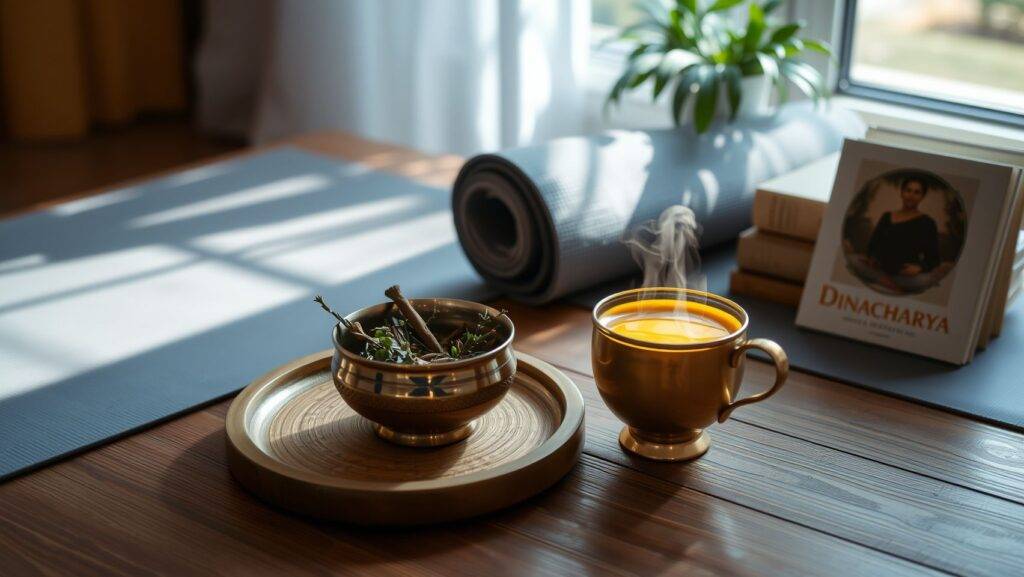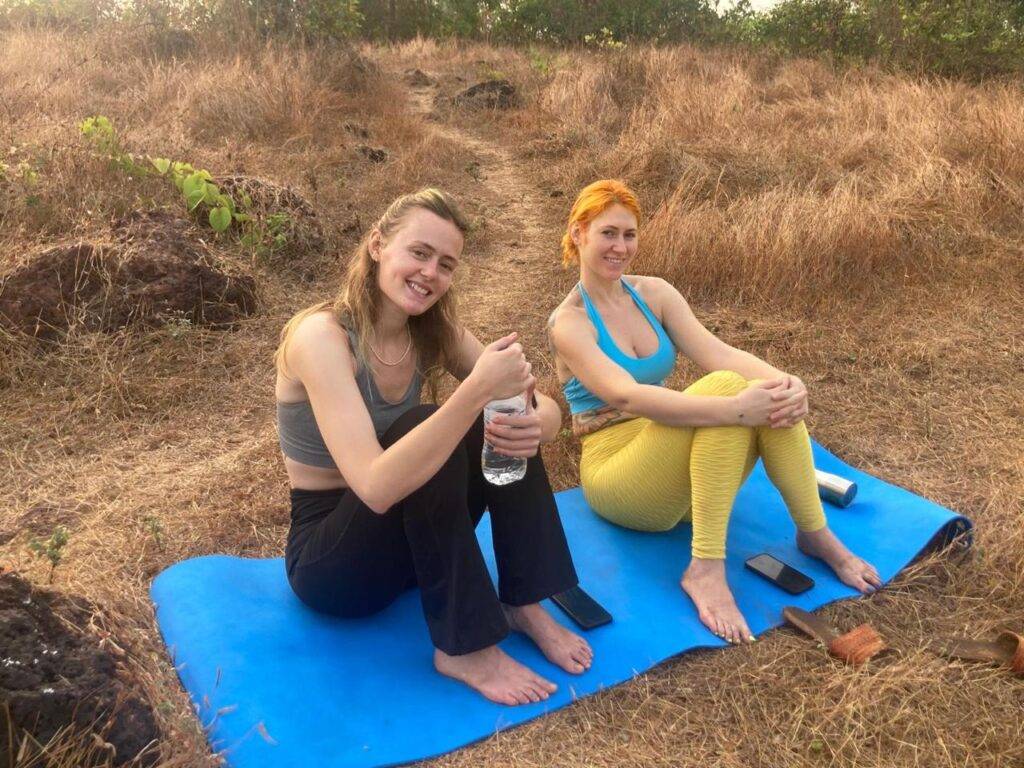The Overstimulated Modern Life
In the age of hyperconnectivity, notifications, scrolling, and spending time in front of a screen can be more than enough to induce sensory overload. The constant back and forth aspect of digital life starts to over stimulate the nerves and this puts us in a slightly lingering state of fight-or-flight. A single study discovered that we have each tapped or swiped our phones more than 2,000 times a day all in search of those small dopamine highs but at the cost of being exhausted.
According to an Ayurvedic perspective, this way of living, creates excess Vata (air/space) and Pitta (fire), which makes us jittery, unsure, or toasted. Biologically we know that blue light makes us out of whack with our sleep patterns, raises cortisol and overstimulates our eyes and brains so that we are wired but tired. Such ongoing communication creates an accumulation of ama (toxins) and keeps our psychic states out of balance gently edging us toward tamas (inertia) or rajas (activity).
We cannot process and sense things in this much clear way. According to ancient Ayurveda wisdom, this has been known long ago, there is a need to slow things down. The solution? Not an unconscious pause. We can reground ourselves using yoga, conscious breathing and herbal treatments so as to bring our mind at peace, detox the body and reconnect. It is not giving up being in tech- but learning to live with it with mindfulness, inside out.
Ayurvedic Perspective: Calming the Senses
According to Ayurveda, health is balance, and balance is related specifically to the three doshas (Vata, Pitta, Kapha). There is so much overstimulation in the world today it is easy for the Vata dosha to get thrown off entirely; the Vata dosha is responsible for our nervous system, our mind, and our movement. It’s easy when the Vata dosha is vitiated to feel ungrounded, restless, depleted. Too much activity in the mind can also aggravate the Pitta dosha producing irritability or “mental heat.”
Ayurveda offers pratyahara to bring back this state of balance. Pratyahara is the withdrawal from sense overload. This conscious diminishment of inputs and creating calm is half the intention of pratyahara. There are many traditional Ayurveda rituals and practices that work to accomplish pratyahara, for example: Daily routine (Dinacharya), Cleansing (Panchakarma), and indeed yoga and meditation. The Art of Living offers simple examples for pratyahara, for example, turning off notifications on your devices and allowing tech-free zones around the home (dinner table, bedtime) will help calm the mind. Before trying to find this balanced state, it is essential first to understand your dosha through Ayurvedic health insights – especially if you want to play an active role in your self-care and daily lifestyle choices based on your constitutional type.
Following are the few Ayurvedic ideas for self-care:
• Screen Boundaries: Designate phone-free hours, like mealtimes or bedtime, and make way for “Do Not Disturb” to become your BFF.
• Wake Up Still: Do not check your phone on as soon as. Instead sit still and close your eyes for a couple of moments and breathe and ground your day.
• Mindful Consuming: Ayurveda says we digest not only food, but also sounds, sights and thoughts. Avoid any toxic media and give your senses nourishment of calm—soothing music, nature and kind words.
Yoga for Grounding and Calm
Yoga is also not only about exercise but it is a set of body and mind balancing. As we are stressed and strung-out or confused and diffuse the nervous system can be slowed down and brought back down to earth by some yogic interventions.
Pranayama (breathwork) is one of them. A short session of conscious breathing every day, a couple of minutes should be sufficient to put Vata back into its place and Pitta at ease. As an illustration, it is possible to speak about such practice as nadi shodhana (alternate nostril breathing); the latter harmonises both parts of brain and reduces anxiety. Re-setting your mood does not require more than 5 or 10 minutes (in the mornings or after an unpleasant situation), even in case you feel stressed. First, a nostril should be closed and the breath should be taken through the free nostril and the other free nostril with the exhale. This soft rhythm has the effect of slowing the minds naturally.) A daily practice of pranayama assists in normalizing the subtle energies of the body by removing blockage and invigorating these subtle energies.
Overstimulated Vata can be grounded via yoga poses as well. As a rule, the most appropriate is grounding, stabilizing poses:
- Vrikshasana
- Tadasana
- Fold poses
- Restorative Postures
- Malasana
- Sukhasana
Other than poses, a stroll lasting at least a couple of minutes can be a moving way of yoga. Where possible walk on the grass or on sand with bare feet as this will actually give you direct access to the grounding energy of the earth. You should feel each step, and air in your lungs when you are walking. It is a walking meditation which awakens the body without the verbalizing of the mind.
Daily Rhythms and Healthy Habits
Ayurveda focuses on the concept of Dinacharya as basic medicine towards stable mind-body health; a daily routine in accordance with the guided paths of nature. The creation of even a basic stable schedule proves to be very beneficial. Daily schedule of wake-up, meals and even sleep gives your body a message that everything is normal which allows the nervous system to rest. It is the equivalent of telling your biochemistry that it is safe to go slow.
- Regular Habit: Maintain early sleeping time and eating time to maintain digestion capability and a stable energy flow.
- Relaxation Rituals: Perform some easy, gentle stretches, a bit of milk flavoured with spices and then an oil massage; all before going to bed.
- Mindful Meals: Cook nourishing and warm foods – soups, grains and ghee –you can stabilize. It is best for raw and cold food and too much caffeine when you experience anxiety or imbalance.
- Nature Escapes: Get out in the sunshine and fresh air to re-set stress and rhythm a few minutes at a time.
Herbal Allies: Plants and Dry Herbs to the Rescue
Ayurveda refers to some plants as Rasayanas (rejuvenators) and adaptogens which help to adapt the body to the stress. In other words, these herbs end up “rewilding” your biochemistry – calming down the swings in stress hormone balances and stabilizing the nervous system. Some simple herbs and spices can really make a difference when it comes to the reduction of anxiety and building resilience.
Here is the list of valuable herbs and their usage:
| Herb | Helps Balance | Key Benefit & How to Use |
| Ashwagandha(Indian ginseng) | Vata dosha, stress | An adaptogen celebrated for calming an overactive mind. It acts as both tonic and sedative – grounding Vata and improving sleep. |
| Tulsi (Holy basil) | Vata & Pitta, fatigue | Revered as the “Queen of Herbs,” Tulsi is a powerful adaptogen that increases energy and helps the body manage stress. |
| Brahmi (Bacopa) | Vata, brain fog | A brain tonic that calms the mind and sharpens memory. Brahmi is useful when Vata has left you feeling anxious or scattered. Use Brahmi powder or tea in the evening (it has a mildly cooling effect) to promote tranquility and clear thinking. |
| Triphala | Vata (digestion) | A blend of three fruits used for digestive cleansing and gentle detoxification. Good digestion supports calm, since upset gut often worsens stress. |
Conclusion
In a hyperlinked universe, daily routines really count. Just a few minutes of meditation in the morning, strict tech curfew, daily eating and sleeping routine, breathing exercise, and herbal calmatives shall keep nerves at bay. All these Ayurvedic and yogic practices rewild your body -root you like a tree; clean out your mind like fresh air. The outcome is a body and mind that is once again more humane: peaceful, equilibrated, and in harmony with the overcoming of life’s obstacles.








